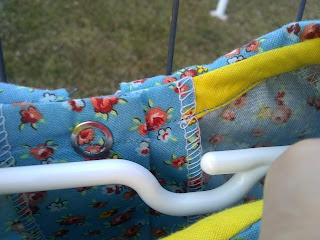I read this short little book a couple of weeks ago. It was a very sad story. I tend to steer clear of sad stories. But, every once in a while I think I could reap some benefits from reading a true story even though it can be depressing. People really have suffered and are still suffering today. Reading a true account of a mistreated individual can help me to be empathetic and also keep me from getting an unrealistic view that all is sunshine and roses. Of course, it is not good to dwell on these things all of the time.
Tuesday, February 23, 2021
Book Report: Our Nig Or Sketches From The Life Of A Free Black by Harriet E. Wilson
I read this short little book a couple of weeks ago. It was a very sad story. I tend to steer clear of sad stories. But, every once in a while I think I could reap some benefits from reading a true story even though it can be depressing. People really have suffered and are still suffering today. Reading a true account of a mistreated individual can help me to be empathetic and also keep me from getting an unrealistic view that all is sunshine and roses. Of course, it is not good to dwell on these things all of the time.
Tuesday, February 16, 2021
Did You Know, Whales Need Fresh Water?
The answer: Whales receive all their hydration through the sea creatures they eat. If they don't eat they will die from thirst before they die from hunger.
Isn't that a fun little fact?
I learned it in this video about a Pilot Whale rescue. This story is pretty fascinating! I hope you enjoy watching it, too!
This Pilot Whale became lost close to shore. A research team was sent to investigate. They had to give the whale water because it was severely dehydrated. They tried several times to lead it out to the open ocean, but everytime it came back to the shore area. After some testing the researchers concluded that the whale had a problem with it's sonar system and was unable to locate any prey. Without being able to eat the whale would eventually die. Fortunately, for the whale, Sea World in California was able, and willing to transport the suffering whale to their location. They put this whale on an airplane and flew it to California! Can you believe that? Anyway, that is where the poor Pilot Whale was able to live out his days. He died in 2012.
Genesis 1:21
And God created great whales, and every living creature that moveth, which the waters brought forth abundantly, after their kind, and every winged fowl after his kind: and God saw that it was good.
Further reading:
https://www.nature.com/news/whale dies from dehydration
Tuesday, February 9, 2021
Try Something New: Japanese Onigiri
Onigiri are eaten in Japan as sandwiches are eaten in The United States. They are easily portable. Onigiri are a great lunch food.
I learned about Onigiri from the YouTube channel Emmymade. I recommend you search, "Emmymade Onigiri," on YouTube if you want to learn more about Onigiri. There are a lot of details in her videos that I found interesting.
Onigiri is basically a seasoned rice ball, stuffed with tuna or other ingredients or left unstuffed, and wrapped in Nori (seaweed paper). I really like them. They are great and they are gluten free.
I am so happy that I tried Onigiri. They are really tasty! The seaweed wrapper, Nori, has a very unique flavor that I can't compare to anything that is in my normal American diet. I would describe Nori as tasting like the sea. Both of my boys really like it! They would eat a whole package in one sitting without adding anything if I let them. My youngest son described Nori like this, "It tastes like fish food!" (And he should know,.....) Haha!
I had to go shopping at the local Asian grocery store to buy some of the ingredients for Onigiri.
 |
| This is the isle with Furikake seasoning. |
I needed Furikake (rice seasoning). There are a lot of varieties of Furikake. I chose a Kimchi flavored Furikake. I thought is was very tasty. There was a nice kick of horseradish and flakes of Nori, plus sesame seed, anchovy, and other flavors.
 |
| This is a package of small rectangle sheets of dried seaweed. The larger squares of Nori are the kind used for sushi. |
Tuesday, February 2, 2021
Pattern Review: Butterick 6483
Did I make any changes?
I did make a few changes.
1. I sewed the trim onto the collar differently. I did not like the way that the pattern instructions require the collar trim to be attached.
 |
| The trim sewn according to the instructions. |
 |
| It looks terrible from the underside. |
I sewed the trim onto the collar seam when I assembled the collar.
 |
| This lace is sewn into the collar seam. |
 |
| It is much cleaner on the underside. |
2. I made the sleeve casings a little wider.
The original casings just don't fit a real baby. My babies are not even that chunky and the original sleeve casings are much too tight. I recommend adding 1 inch to the sleeve casings when you cut out the pattern. Your sleeve won't have as many gatherings, but it still has enough.
3. I did not make a placket opening in the skirt. I never like how those gape open, and I thought the bodice back opening provided enough room to put the dress over the head and get the arms in the sleeves.
I installed snaps at the back opening instead of buttons and button holes.
4. The pattern calls for a 3 inch hem. I only did a 1 inch hem. My little girl needed the extra length.
Is the pattern easy to follow?
Yes, this pattern is easy to follow. The instructions are clear and the construction steps are in a very good order.
This pattern even directs that each seam that is going to be left exposed be finished. It doesn't just say at the end of the pattern, "Oh, by the way, all exposed seams should be finished." No, this pattern puts it right in there when the step is finished, "Now stitch again 1/4" from the seam allowance." I appreciated that.
What material did I use?
I used a few different cotton fabrics from my stash. Some of them were probably quilting cottons.
 |
| I was excited to use this vintage material for one of the dresses. My sister gave it to me years ago. I have been saving it for a special project. |
















